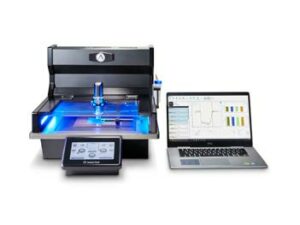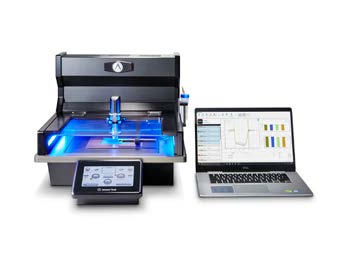Drying rate
Having our performance clothing and footwear dry out efficiently is considered to be a key feature for most performance garments, as nearly every item that we wear will come into contact with liquid moisture from one point of origin or another, be it from snow, from rain, or most commonly of all from sweat.
Some key terminology surrounding dry rate testing is:
Drying rate — the change in volume per unit time a liquid evaporates from a textile.
Drying time — the time it takes for a specified amount of liquid to evaporate from a textile under controlled testing conditions.
Performance textiles and the human body
To further understand the functions of performance garments, and to explore why dry rate testing is such an important subject in this area of textiles, we need to look closely at the relationship between performance textiles and the human body.
The importance of maintaining a constant body temperature
The human body is constantly generating heat and tries to regulate its core temperature between 36.5 – 37.5°C . To cool down, the body sweats which then evaporates from the skin, taking heat away and therefore cools our body.
Efficient drying in our performance textiles relates closely to our health. The better the garment is at sweat-wicking and drying, the more stable the body’s surface temperature. Effective thermoregulation here provides both comfort and safety, as our garments and footwear can dry out before the liquid moisture has time to drop in temperature and cause what is known as post exercise chill sensation.
Drying Rate: The Rising Star in Textile Testing & A Glimpse Into the Future
In today’s textile industry, consumer comfort, fast performance, and intelligent functionality are more than just trends — they are testing priorities. Among the performance indicators that global brands are beginning to prioritize, drying rate testing has emerged as one of the most important, especially in the realm of activewear, sportswear, and technical fabrics.
What Is Drying Rate and Why Does It Matter?
Drying rate refers to how quickly a fabric evaporates moisture after being wetted. It is often measured by:
-
Elapsed time to reach dryness
-
Percentage of moisture lost over a given timeframe
Why it’s becoming critical:
-
Directly affects wearer comfort, especially for athletes and outdoor users.
-
Helps brands differentiate their products with quick-drying claims.
-
Indicates finishing quality and fiber architecture in technical textiles.
Popular Methods for Drying Rate Testing
1. Manual gravimetric method
-
Wet fabric sample → weigh over time → calculate drying curve.
-
Simple setup
-
Accuracy highly dependent on controlled environment.
2. ProDry (James Heal) – Automated Image Analysis
-
Uses high-resolution camera and software to track moisture evaporation in real-time.
-
Visual, accurate, and reproducible.
-
Generates detailed drying profiles and graphs.
-
Captures localized drying behavior across the surface.
Drying Rate: The Future of Fabric Performance Testing
According to AATCC, ISO, and various global standard bodies, drying rate will soon become a core part of the “Perceived Comfort Testing Matrix”, alongside:
-
Thermal regulation
Brands like Nike, Adidas, and Lululemon are already integrating drying time into lab protocols for their newest collections.
From 2026 onwards, expect to see:
-
Drying rate included in updated ISO & AATCC testing standards
-
Broader adoption of image-based devices like ProDry in labs worldwide
Sign up for advice
- Hotline0938 078 338
- emailinfo@thachanhvang.com






